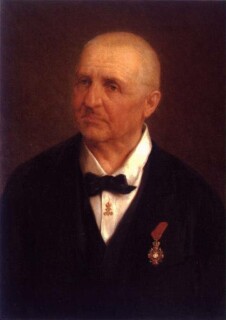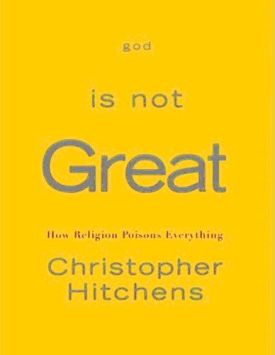The Day the Music Died
From The Wall Street JournalAnton Bruckner
Last week, it was revealed that National Public Radio was laying off employees in its cultural programming division and, according to Philip Kennicott in the Washington Post, “gutting” its showcase classical music program “Performance Today.” And this was all happening at the same time that it was expanding its West coast operations in order to concentrate on “the business side of entertainment.”
That would be movies, TV and pop music. Classical music, which is what most people still associate with public radio, hasn’t got much of a business side any more, and little of what it does have is on the West coast.
Looks like it’s time for Beethoven to roll over again.
These are only the latest in what has been a long series of defeats for broadcast high culture at the hands of the corporate suits. After WNYC lost a transmitter in the collapse of the World Trade Center, it relegated its classical music programming to the 8 PM to midnight slot. But when WNYC got back to normal earlier this month, its music didn’t. Though there is a new one-hour cultural magazine show during the day, it is part of the news-talk format picked up from commercial radio that is proving more and more attractive to public stations. Music itself, as opposed to talk about music, is heard only after 7:00 PM.
WNYC’s own Community Advisory Board passed a resolution that “deeply regrets” the changes and laments “the potential dilution of one of WNYC’s core assets — the extraordinary and passionate loyalty of its listeners and members.”
Passionately loyal they may be, but numerous they’re not. At least not numerous enough. Public radio stations across the country are dumping their traditional formats — mainly classical music and jazz — or crowding them to the edges of their schedules because their marketers are telling them that there are many more listeners in a news/talk format.
Marketers? Wasn’t the whole point of public radio to “serve groups whose voices would otherwise go unheard”?
You may not be surprised to learn that the marketers themselves see no contradiction here. In the words of David Giovannoni, whose marketing firm, Audience Research Analysis, has been largely responsible for advising the network and local stations of serious music’s unfavorable demographics, “I am not saying that program directors should make programming decisions based on how much money they’re likely to raise. That would undermine the values at the very heart of our service, making it unworthy of support. I am saying, however, that program directors should make the difficult decisions that give the public the highest level of service. That means replacing lower- performance programming with higher-performance programming.”
In other words we are to regard it as being strictly coincidental that “higher-performance programming” also happens to bring in more money.
Public broadcasters, says John Patterson of the Voice of America, “are confusing public service with popularity.” Patterson is also known as the “Metmaniac” for his ultimately successful campaign to bring back broadcasts of the Metropolitan Opera to Washington when WGMS, the local commercial classical station, canceled them last spring. With “an organized program of prodding” by letter-writers and e-mailers, he persuaded WETA, a local public radio station, to pick up the broadcasts. But even they were “under a lot of pressure to say no.”
The problem, says Tom McCourt, who teaches at the University of Illinois at Springfield and is the author of Conflicting Communication Interests in America: The Case of National Public Radio (Praeger, 1999), is that consultants whose experience was in commercial radio “pretty much set the agenda for public radio in the mid-1990s.” With their advice, the Corporation for Public Broadcasting set as its three criteria for public funding minority ownership, average quarter-hour ratings and money raised through listener support.
Average quarter-hour ratings, used by commercial radio ratings services, put a premium on a lowest-common-denominator audience — people who leave the radio on to one station all day as background noise, as opposed to those whose “passionate loyalty” is to particular programs or formats. These would be better measured by cumulative ratings. But the new thinking in public radio is that the background listeners are not only more numerous but also more likely to make up a “core listenership” that will contribute money.
You can see the effects of this thinking even on those that retain classical music. There is a reason why your local public radio station plays a lot more Telemann and Boccherini than Mahler and Bruckner (pictured) — to say nothing of Schoenberg, Berg or Webern — and it has nothing to do with musical quality. It is that the earlier composers simply wrote better background music — or music for people who don’t really want to listen. A lot of 18th century music was written to be played, as Auden put it of Mozart divertimenti, “while bottles were uncorked,/Milord chewed noisily, Milady talked.”
Nowadays, the philistinism of the aristocracy is open to everyone. For the future of classical music on the radio, we only have to look at WGMS in Washington, which booted the Metropolitan Opera. It has risen to fourth place in the local ratings by an elaborate system of matching music — mostly shorter pieces and individual movements carved out of longer works — to the presumed moods of its listeners over the course of the broadcast day.
Jim Allison, program director at WGMS, told Stephen Budiansky of The Atlantic Monthly recently that his job was “day-parting,” or deciding what kinds of feelings people wanted from their music at, say, drive time in the morning (“energetic”) or afternoon (more “relaxing”). “To help him match the sound to the desired mood, Allison has a database containing descriptions of the music in the station’s 10,000-CD library.” These provide labels to classify the music’s “mood and energy level” as, for example, “boisterous”, “pleasant”, “tranquil” or “lively.”
This is the direction in which public radio is moving too. Except on Saturday afternoons, it is already hard for Washington listeners to tell the difference between the music on WGMS and WETA. And NPR, whose cutbacks, says Tom McCourt, are “really emblematic of the marketplace mentality that has overtaken public broadcasting in general,” can hardly give a lead to the local stations anymore because it is controlled by them. It is not only covering, it is part of “the business side of entertainment.”
Discover more from James Bowman
Subscribe to get the latest posts to your email.







